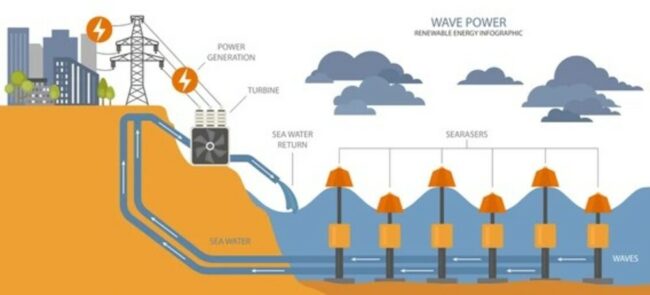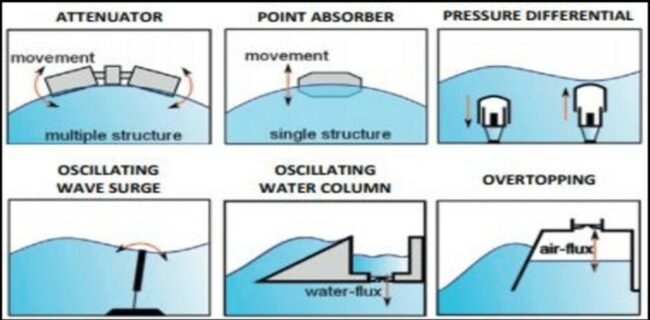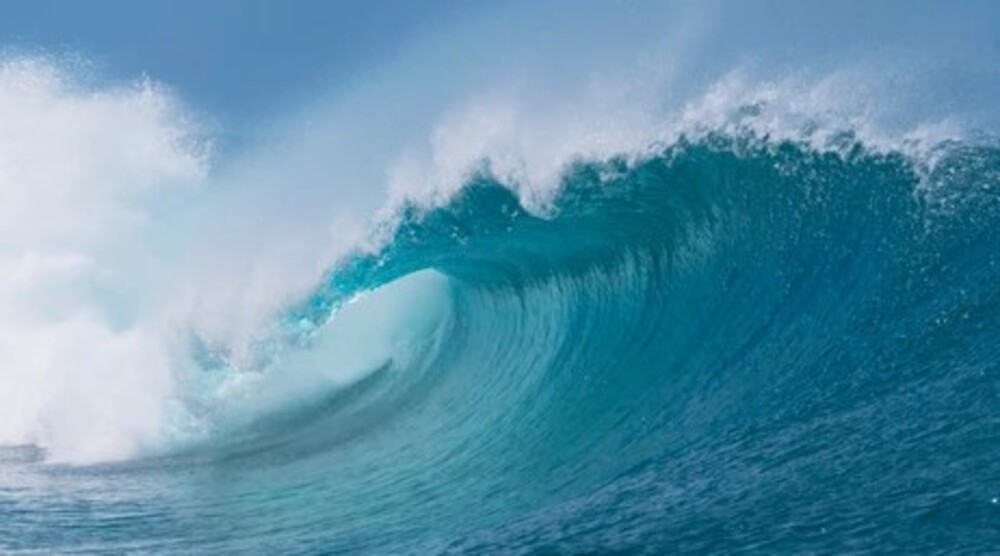At the European Marine Energy Centre (EMEC) in Orkney, AWS Ocean Energy announced very positive findings from the current stage of sea trials of wave energy systems.
At EMEC’s Scapa Flow test site, the Waveswing wave energy converter recorded average power above 10kW and peaks over 80kW during a period of moderate wave conditions, constituting a significant high point of the scientific testing program so far. These numbers were 20% higher than the developer’s own expectations.
The system keeps generating power despite adverse weather
Other significant discoveries highlight the underwater Waveswing’s propensity for survival, which allowed it to keep generating power despite adverse weather. The following short but powerful video clip, filmed in Force 10 gales, by AWS illustrates this. It shows a steel nut strung on a string inside the device.
The testing program also showed that it is possible to deploy the Waveswing in less than 12 hours, going from sitting on the quayside to being installed and completely functional.
By the 2022 year’s end, they expected the current phase of sea trials to be finished, and AWS is planning to redeploy for additional testing at the start of this year.
Optimism about wave energy supported by facts
According to Simon Grey, CEO of AWS Ocean Energy, these numbers confirm their conviction that Waveswing is the genuine deal. As he said, although they have always been optimistic about Waveswing’s performance potential, it is amazing to have that optimism supported by actual facts.

This performance, in his opinion, compares extremely favorably to equivalent numbers for any prior wave device tested at the same location. Currently, they are actively looking for conversations with commercialization partners, additional end customers, and anyone who is really interested in the development of commercial wave power. For instance, sponsored testing programs are one way for partners to learn more about Waveswing and its potential, Grey said.
Waveswing features a single absorber design
Considering the future, Mr. Grey says that the Waveswing has a single absorber design. It has special attributes that make it excellent for remote power applications, such as powering subsea oilfield equipment and oceanographic monitoring.
However, they are confident that multi-absorber systems, which can achieve the scale required for wave power to meaningfully contribute to renewable energy supply, are the way of the future for utility-scale power. Waveswing plans to build platforms with a maximum capacity of 20 500 kW units each, giving each platform a total potential capacity of 10 MW.
The Novel Wave Energy Converter development program, financed by Wave Energy Scotland (WES), and the Interreg North-West Europe Ocean DEMO project both provided funding for the £3.4 million prototype development project.
How do wave energy systems work?
Wave energy systems, also known as wave energy converters (WECs), harness the energy of ocean waves to generate electricity. There are several different types of wave energy systems, but they generally fall into two categories: point absorbers and attenuators.

How do point absorbers work?
Point absorbers, such as the Pelamis and the Oyster, are floating devices that move up and down with the waves. They convert the movement of the device into electricity through the use of hydraulic or mechanical systems. The Pelamis, for example, consists of several cylindrical sections that are connected by hinges. As the waves move the device up and down, the hinges cause the cylinders to rotate, which drives generators to produce electricity.
How do attenuators work?
Attenuators, such as the Wave Dragon, are also floating devices but in a shape like a long narrow barge. They anchored the system in place and move side-to-side with the waves. The movement of the device is used to drive generators and produce electricity.
Is it possible to combine wave energy systems with other renewables?
Producers can also combine wave energy systems with other forms of renewable energy, such as wind and solar, to form hybrid systems. This can help to increase the overall efficiency of energy generation and reduce the cost of electricity production.
Wave energy systems have the potential to be a significant source of renewable energy. They estimate the global wave energy resource to be around 2 TW, which is equivalent to twice the current global electricity demand. However, the technology is still in the early stages of development. That means overcoming of several challenges before the full commercialization of wave energy.
One of the main challenges is the harsh marine environment in which wave energy systems must operate. The devices must be able to withstand the constant movement of the waves, as well as the corrosive effects of saltwater. Additionally, the devices must be able to withstand the forces of storms and typhoons.
Are wave energy systems cost-effective?
The high cost of wave energy systems is another challenge. The cost of electricity production from wave energy is currently higher than from other forms of renewable energy. Wind and solar energy production are significantly cheaper. However, as the technology continues to develop and more wave energy systems are under deployment, the cost of electricity production will decrease.
In summary, wave energy systems work by harnessing the energy of ocean waves to generate electricity. There are several different types of wave energy systems, but they generally fall into above mentioned two categories. These systems still have a long way to go to reach commercial maturity and overcome the challenges of the harsh marine environment and high costs.

